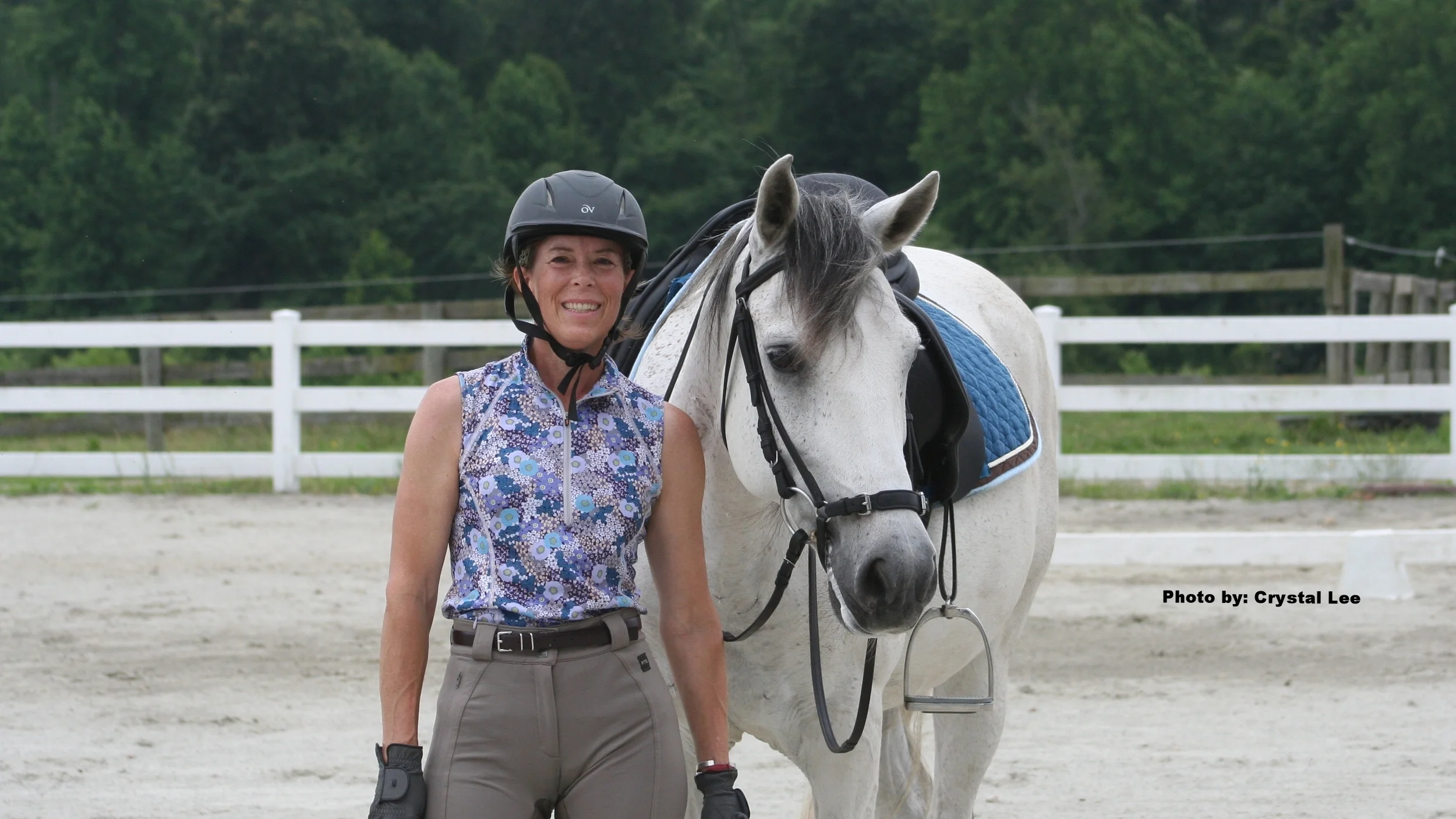Mental Epiphany Turns Physical
/Today my mental epiphanies began to translate into physical epiphanies.
This morning I drove to the barn determined to ride with a positive attitude and an open mind. I wanted my open mind to examine my body and my horse’s responses when riding; I decided to listen to myself and my horse.
I focused on warm-up exercises specifically to help my test movements: collect and lengthen in rising trot for my mediums and extensions, square turns in walk (or quarter turn) for my walk and canter pirouettes; neck flexions in canter, and shallow leg yield and half-pass steps in canter for my half-passes. I concentrated on my upper body being tall on both sides of my ribcage. I focused on how I used my outside leg in the walk turns, so that I could translate the feel to my canter pirouettes. I made sure that I stayed loose and long through my thighs in my sitting trot work with weight in my stirrups.
When I started to ride components of the test, I made myself ride with clear aids and insisted on quality of gait throughout each movement from my horse. If I didn’t get it, we rode a re-do. Instead of thinking about riding the whole test, I worked on 2 movements flowing together at a time. I managed to keep myself from becoming overwhelmed and could praise my horse at frequent intervals.
Things I noted from listening to my body and my horse:
In the half pass, if I work too hard I end up pumping with my seat or banging with my outside leg causing my horse to lose forward energy and be less responsive to my aids. If I just sit and really concentrate on twisting my upper body like a barber shop pole (I love that old image for your upper body) and judiciously reinforce my leg with whip, my horse is responsive and willingly gives me more.
In the canter pirouettes, I start to pump with my seat to keep my horse cantering, and (horrors!), I also discovered that I do not follow correctly with rein; I have too much arm movement and interfere with rein. No wonder my horse doesn’t lower his haunches when I collect, tends to swing around my leg, and loses his momentum and breaks. So I disengaged my seat, activated my legs, and tried to stay out of his way with my hand. If the pirouettes were not perfect, at least my horse was much happier with me and willing to maintain the canter.
Note from a previous lesson: To ride the quarter canter pirouette – ride the diagonal line as if you were going to ride all the way to the letter, ride it straight and forward, start collecting a few strides before X, and at X, twist your body (like a barbershop pole again) towards M or H, sit on your inside seat bone, keep your inside leg active, and push your horse’s haunches over with your outside leg in the canter rhythm, count your canter strides through the quarter turn, and canter out of it straight toward M or H.
In the flying changes, I started counting 4’s on the short side, rode toward a point on the horizon across the diagonal, and used clear, definite, quick aids. Oh my goodness, that went well!
Although, I am still not riding an amazing Fourth Level, Test 2, I am riding it with a better frame of mind and a happier horse. And every day, I say, “Wow! I have an amazing horse!”
